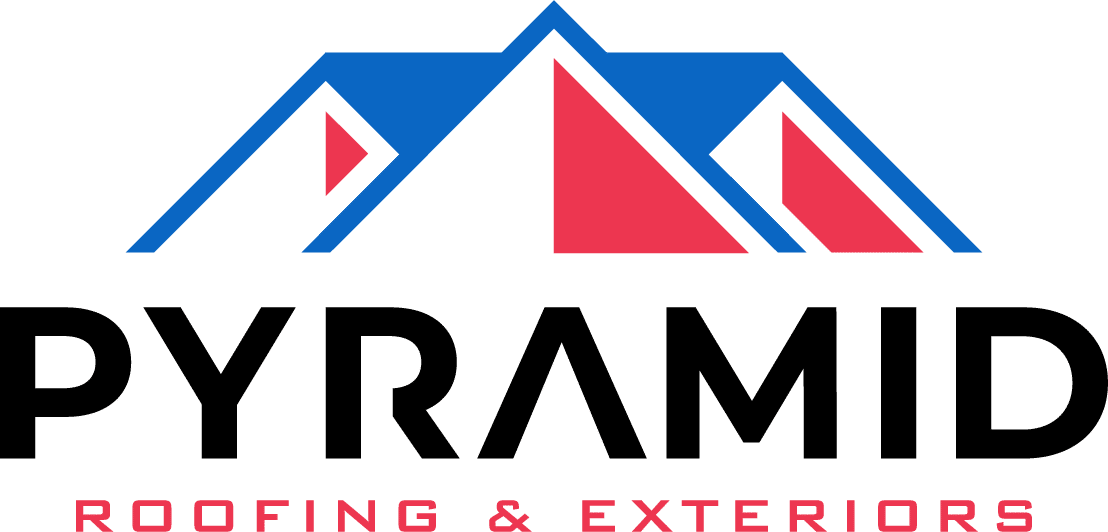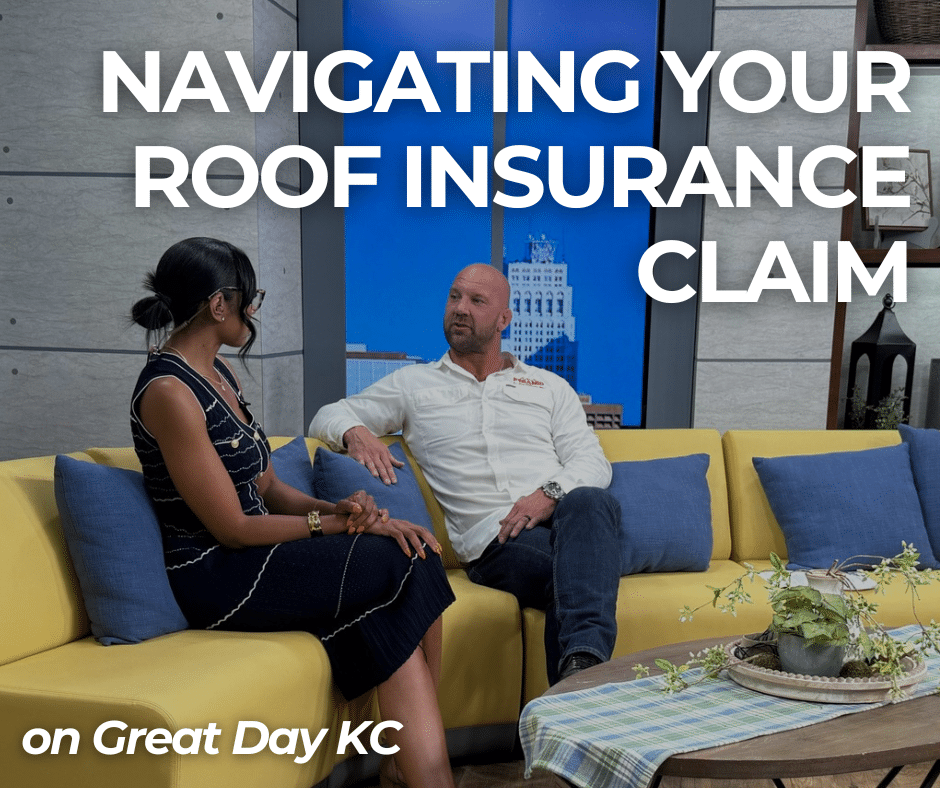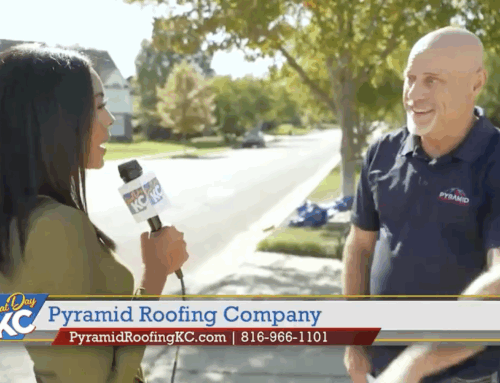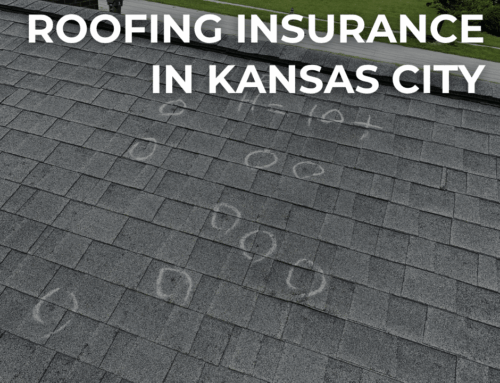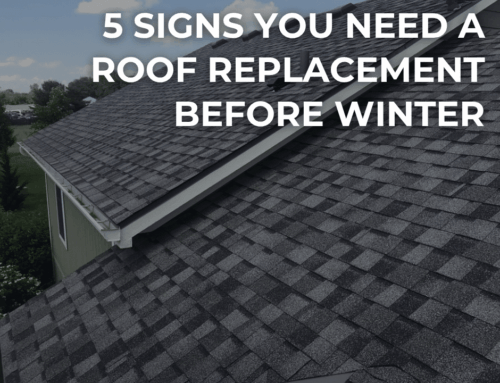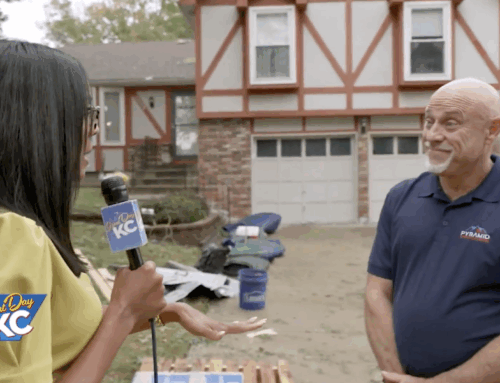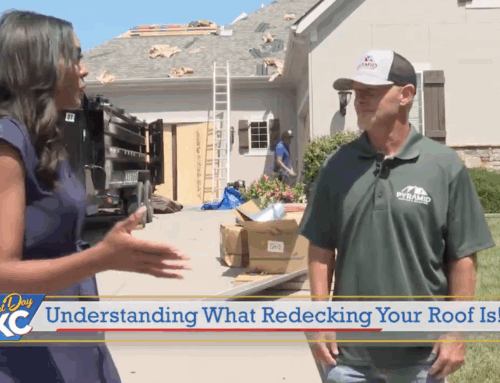Pyramid Roofing has proudly served the Kansas City community since 1992. With over 30 years of roofing experience, we understand how overwhelming the insurance process can feel after a storm. That’s why we’re here to guide you through every step of your roof insurance claim—so you know exactly what to expect.
This Thursday, we got the chance to talk about the insurance process with Fox 4. Watch us on their Great Day KC Segment below. Pyramid Roofing’s very own director of roofing sales, Heath Chitwood, walks us through the ins and outs of navigating a roof insurance claim – from the very first inspection to the final paperwork.
–
Heath answers some of the most frequently asked questions to help you feel informed and prepared every step of the way.
If you think you have storm damage, what’s the first thing you should do?
If you suspect storm damage—such as hail—the first thing you should do is safely inspect your property for visible signs, like missing shingles or dents in gutters. “Then, before contacting your insurance company, you’ll want to give a reputable roofing company a call to come out and inspect your roof. The roofer will then perform a test square, just like an insurance adjuster would, to see if you have the recommended amount of hail hits per test square to turn this into insurance to proceed with the claim.”
Test squares (usually 10×10 feet) may be used during inspections. For example, a common threshold for hail damage is 8 or more hail hits in a square on several slopes of the roof. However, this standard varies by insurer and region, and the final decision on what qualifies as claim-worthy damage is made by your insurance adjuster—not the roofer.
You have hail damage – now what does the roof insurance process look like?
“The next step is to contact your insurance provider and initiate a claim. From there, your insurance company will schedule an adjuster to inspect the damage. At Pyramid, we’ll meet the adjuster out there to ensure the homeowner is being taken care of.”
After the adjuster’s inspection, the insurance company will issue a scope of work—a detailed breakdown of approved repairs and associated costs. This is the basis of your roofing claim.
Now that you have a Scope of Work, what do you do?
“Once the adjuster sends over their scope of work, we’ll ask you to share that scope with us to make sure they don’t miss anything.” They’ll verify that everything necessary to complete the roof replacement is included. If anything is missing—such as underlayment, ventilation, or code-required items—your roofer can help you initiate a supplement request.
What is the supplement process?
The supplement process is when additional items not initially included in the insurance estimate are submitted for approval. These could include:
- Local building code upgrades
- Flashing or decking replacement
- Labor or material costs not accurately reflected
The roofer typically gathers documentation (photos, invoices, code references) to justify these supplements. You, the homeowner, still communicate with your insurer, but the roofer can help provide needed documentation.
What does my roof insurance really cover?
“What we’re seeing in the industry right now is that the insurance is starting to change. Where the $500,00 and $1500 deductible that we’re kind of used to – that’s changing to now most of your insurance providers are going to a percentage rate. Whether it be a 0.5%, 1% or 2% which means your deductible is going to get much larger based off of the cost of your home.”
Make sure you understand what your insurance covers so you can be mindful of your roofing project. Pyramid Roofing, and many other reputable roofing companies, provide financing if needed.
What are some things I should avoid/be aware of during this process?–
Storms bring out many roofing companies, not all of them reputable. Here is something Heath says to watch out for the next time Midwest weather wrecks havoc on your home.
-
-
Don’t sign a contingency agreement on the spot, especially with no-name door knockers. Most of these roofers who come knocking on your door sweep in just like the storm, and leave just as fast. Heath recommends not signing a contingency agreement on the spot with anyone, especially for these reasons. Contingency agreements can lock you into working with a company before you’ve fully vetted them. Signing with the first company you see may leave you high and dry without a warranty or local office to fall back on.
-
Never allow a roofer to file your claim. It is illegal in many states (and against insurance rules) for contractors to handle or negotiate insurance claims on your behalf without a public adjuster license.
- Be wary of short workmanship warranties. Your home is one of the most valuable, and expensive, thing you own. Make sure it’s covered for years to come.
-
If you have any questions about navigating your roof insurance claim, don’t hesitate to reach out to Pyramid Roofing. We’re here to work with you—and your insurance adjuster—to make sure you’re fully covered. (Literally!)
Call Pyramid Roofing. Kansas City: 816-966-1101 | Springfield: 417-943-4011
